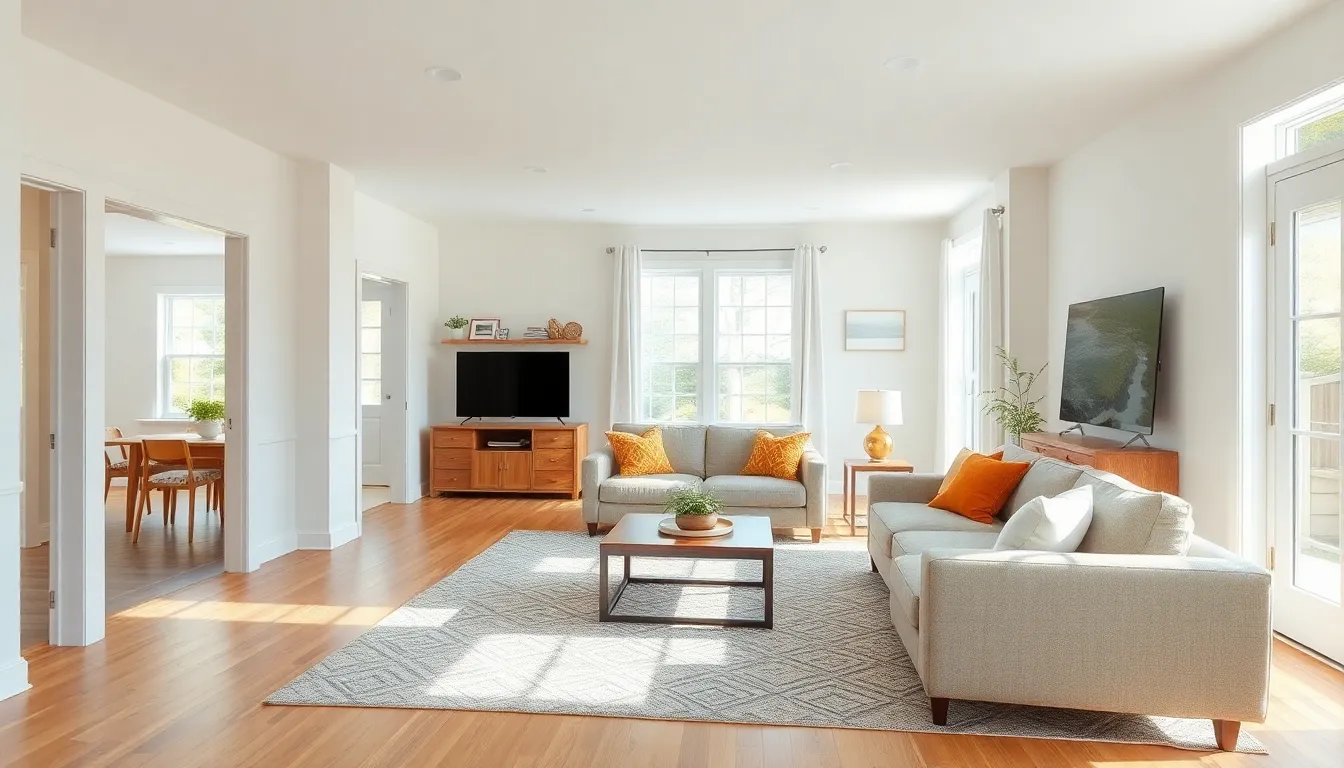In a world that values inclusivity, universal design homes stand out as a beacon of accessibility and comfort. These thoughtfully crafted spaces cater to individuals of all ages and abilities, ensuring that everyone can navigate their environment with ease. Whether it’s a wide doorway for wheelchair access or lever-style door handles for those with limited hand strength, universal design principles create a harmonious living experience.
As more people recognize the importance of adaptable living spaces, the demand for universal design homes continues to rise. These homes not only enhance quality of life but also promote independence and dignity for their occupants. By embracing universal design, homeowners can invest in a future where accessibility is the norm, making it a trend that’s here to stay.
Table of Contents
ToggleOverview of Universal Design Homes
Universal design homes prioritize accessibility, convenience, and safety for everyone, regardless of age or ability. These homes include features that enhance comfort and usability, such as:
- Wide Doorways: Doorways often measure at least 32 inches, allowing for easy passage of wheelchairs or walkers.
- Lever-Style Door Handles: These types of handles require less strength and dexterity than traditional knobs, making doors more accessible.
- Zero-Step Entrances: Entrances feature no steps, providing easy access for individuals with mobility challenges.
- Open Floor Plans: Open layouts eliminate barriers, creating spacious environments that facilitate movement.
- Non-Slip Flooring: Choosing flooring materials that provide traction reduces the risk of slips and falls.
- Accessible Bathroom Features: Walk-in bathtubs, grab bars, and shower benches support safe bathing and personal hygiene.
As the awareness surrounding adaptable living spaces increases, the demand for universal design homes continues to grow. Embracing universal design represents an investment in living environments that enhance quality of life and promote independence, aligning with the evolving needs of the population.
Key Principles of Universal Design

Universal design encompasses principles that ensure homes cater to a diverse range of needs, optimizing comfort and functionality for all inhabitants.
Inclusivity and Accessibility
Inclusivity and accessibility stand as foundational aspects of universal design. Homes designed with these principles include features such as:
- Wide doorways that accommodate wheelchairs and mobility aids.
- Lever-style door handles that require minimal strength to operate.
- Zero-step entrances that eliminate barriers from the outside to the inside.
- Accessible pathways that allow for easy navigation without obstacles.
Such elements create environments where individuals of all ages and abilities can live, work, and interact without hindrance.
Flexibility and Adaptability
Flexibility and adaptability further enhance universal design by allowing spaces to meet changing needs. Key characteristics include:
- Open floor plans that provide versatile use and facilitate movement.
- Adjustable shelving and storage options that accommodate various items.
- Multi-functional furniture that serves different purposes, like a sofa bed.
- Bathrooms with customizable features, such as adjustable countertops or removable grab bars.
These aspects enable residents to personalize their living environments, promoting long-term comfort and usability as circumstances evolve.
Benefits of Universal Design Homes
Universal design homes offer significant advantages, enhancing living experiences for a wide range of individuals. The following subsections detail key benefits.
Enhancing Quality of Life
Universal design homes improve quality of life by promoting accessibility and safety. Features like wide doorways and zero-step entrances facilitate movement for individuals with mobility challenges. Open floor plans enhance social interaction and ease of navigation. Non-slip flooring reduces the risk of falls, particularly for seniors and children. Accessible bathroom features, such as grab bars and walk-in bathtubs, enhance comfort and independence. These elements create environments where individuals can live with dignity, fostering a greater sense of belonging and well-being.
Increasing Property Value
Universal design characteristics increase property value through broader market appeal. As the population ages, homes that prioritize accessibility attract more buyers, making them a sound investment. Properties with features like lever-style door handles and customizable spaces often see quicker sales and higher resale prices. Adaptable living spaces align with modern needs, ensuring longevity in housing markets. Prioritizing universal design not only meets the demands of diverse lifestyles but also enhances property appreciation in the long term.
Features of Universal Design Homes
Universal design homes incorporate specific features that enhance accessibility and convenience for all residents. Key characteristics include thoughtfully designed entrances, exits, and room layouts.
Entrances and Exits
Entrances and exits are critical for seamless access. Features include:
- Wide doorways: Minimum width of 32 inches accommodates mobility aids like wheelchairs and walkers.
- Zero-step entrances: Eliminate barriers, providing easy access from the outside.
- Gentle slopes: Gradual ramps replace steps, ensuring accessibility for all individuals.
- Lever-style door handles: Simplify operation, accommodating those with limited hand strength.
These elements facilitate smooth transitions in and out of the home and promote inclusive living environments.
Room Layouts and Space Utilization
Effective room layouts enhance functionality and movement throughout the space. Notable characteristics include:
- Open floor plans: Create continuous sightlines and reduce obstacles, allowing for free movement.
- Adjustable shelving: Allow customization based on the user’s height and needs.
- Multi-functional furniture: Provide flexible options that adapt to different activities and space requirements.
- Generous circulation space: Ensure at least 36 inches of clearance around furniture, enhancing mobility and comfort.
These design principles support easy navigation and empower residents to use their homes efficiently, regardless of their physical capabilities.
Challenges and Considerations
Universal design homes face certain challenges and considerations that influence their implementation and acceptance. Key aspects include cost implications and adherence to building regulations and compliance standards.
Cost Implications
Implementing universal design features often involves higher initial costs than traditional home designs. Significant expenses may arise from specialty materials, customized installations, and advanced technologies that enhance accessibility. For instance, wider doorways and zero-step entrances may require structural changes, leading to increased labor and material costs. While these features may boost property values and decrease future adaptation costs, homeowners must weigh the upfront investment against long-term benefits. Approval from financial institutions or funds dedicated to accessible housing may alleviate some financial burdens.
Building Regulations and Compliance
Compliance with local building codes and regulations presents another challenge for universal design homes. Various jurisdictions enforce distinct accessibility guidelines, necessitating thorough research and understanding of these legal requirements. Adapting universal design principles within these regulations can require creative solutions, particularly where specifications may conflict. Homeowners or builders should collaborate with architects or contractors knowledgeable in universal design to ensure adherence to relevant regulations. This proactive approach provides feasible designs that meet safety and accessibility standards while maximizing usability for all residents.
Universal design homes represent a pivotal shift towards inclusive living spaces that cater to everyone. By incorporating features that prioritize accessibility and safety, these homes not only enhance comfort but also promote independence for individuals of all abilities.
As the demand for adaptable living environments rises, investing in universal design becomes increasingly beneficial. Homeowners can expect not only improved quality of life but also potential increases in property value. Embracing universal design is a proactive step towards creating homes that are not just functional but also welcoming for all, ensuring that everyone can enjoy their living spaces fully.





